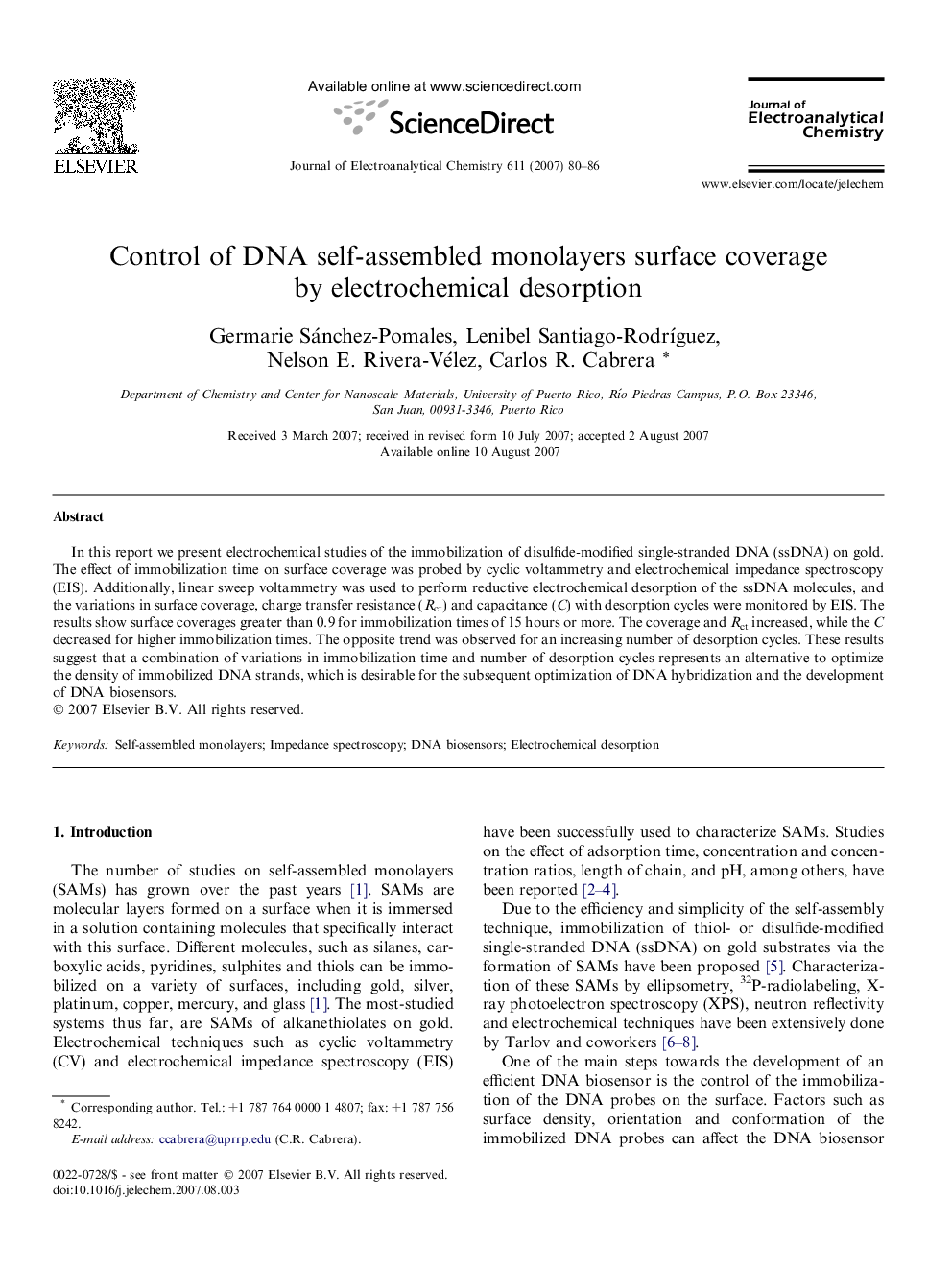| Article ID | Journal | Published Year | Pages | File Type |
|---|---|---|---|---|
| 220683 | Journal of Electroanalytical Chemistry | 2007 | 7 Pages |
In this report we present electrochemical studies of the immobilization of disulfide-modified single-stranded DNA (ssDNA) on gold. The effect of immobilization time on surface coverage was probed by cyclic voltammetry and electrochemical impedance spectroscopy (EIS). Additionally, linear sweep voltammetry was used to perform reductive electrochemical desorption of the ssDNA molecules, and the variations in surface coverage, charge transfer resistance (Rct) and capacitance (C) with desorption cycles were monitored by EIS. The results show surface coverages greater than 0.9 for immobilization times of 15 hours or more. The coverage and Rct increased, while the C decreased for higher immobilization times. The opposite trend was observed for an increasing number of desorption cycles. These results suggest that a combination of variations in immobilization time and number of desorption cycles represents an alternative to optimize the density of immobilized DNA strands, which is desirable for the subsequent optimization of DNA hybridization and the development of DNA biosensors.
